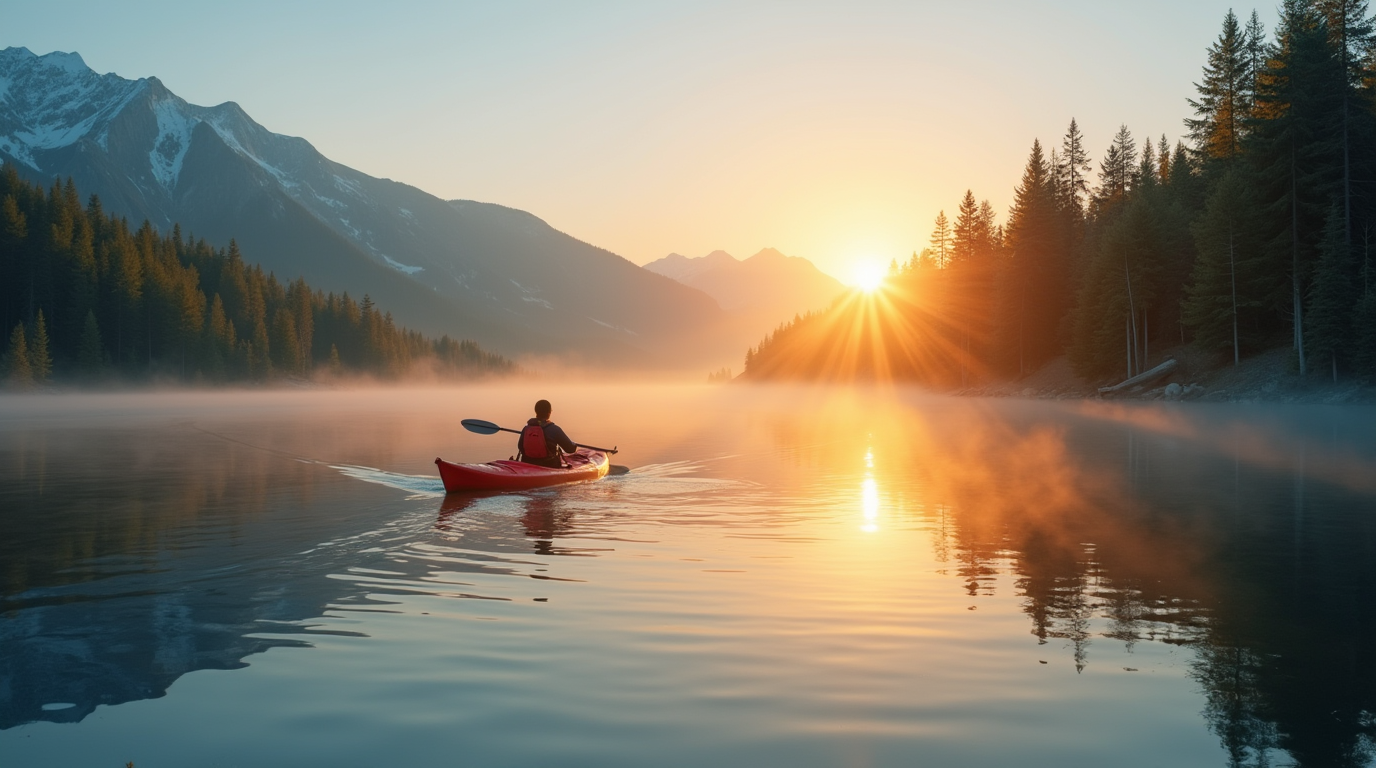
Picture this: you’ve made up your mind to embrace the call of the water. You’ve imagined yourself gliding effortlessly across a serene lake or exploring a rugged coastal trail. But then reality hits—you don’t know what to look for when buying a kayak. It can feel overwhelming with so many options, models, materials, and terms that sound foreign. If you’re not careful, one wrong decision could lead to discomfort, wasted money, or even safety risks. That’s exactly what this guide is here to help you avoid. You’ll learn everything you need to make a confident, informed purchase.
- Understanding the Different Types of Kayaks
- Key Factors to Consider When Choosing Your Kayak
- Kayak Materials and Durability
- Size and Shape Matter
- Essential Kayak Accessories
- Try Before You Buy
- Common Mistakes to Avoid
- Kayak Comparison Table
- FAQs: What to Look for When Buying a Kayak
- Conclusion: Your Perfect Kayak Awaits
- Call to Action
Understanding the Different Types of Kayaks
The first step is knowing the main types of kayaks available and which one suits your lifestyle. Each type is designed for a specific environment, and using the wrong kind in the wrong conditions can leave you disappointed—or worse, stranded.
1. Recreational Kayaks
- Great for calm waters
- Wide, stable, and usually affordable
- Best for beginners and casual paddlers
2. Touring Kayaks (Sea Kayaks)
- Built for long-distance paddling and ocean use
- Longer and narrower for speed and tracking
- Often include storage compartments
3. Sit-on-Top Kayaks
- Perfect for warm weather and beginners
- Easier to get on and off
- Self-draining design; you won’t sit in water
4. Whitewater Kayaks
- Short, maneuverable, designed for rapids
- Requires more skill to control
5. Inflatable Kayaks
- Compact, lightweight, and portable
- Great for travel and storage
- Some offer decent performance, but not ideal for rough water
6. Tandem Kayaks
- Built for two paddlers
- Can be recreational, touring, or sit-on-top
Key Factors to Consider When Choosing Your Kayak
1. Where Will You Paddle?
Your kayaking environment determines the kayak you need. Will you be on lakes, rivers, or coastal waters? If you’re sticking to calm lakes, a recreational kayak is enough. Planning long ocean trips? A touring kayak is your friend. Whitewater? You already know what’s up.
2. What Is Your Experience Level?
As a beginner, stability and ease of use matter more than speed. A wider kayak with a sit-on-top design may be best for you to start with.
3. How Will You Transport and Store It?
If you live in an apartment or have limited space, an inflatable or folding kayak may be the smartest pick. Also, consider whether you have a car roof rack or need something light enough to carry solo.
4. Weight Capacity
Check the kayak’s maximum weight limit, especially if you’re carrying gear or planning multi-day trips. Overloading can impact performance and safety.
5. Comfort and Seating
An uncomfortable seat can ruin your adventure. Look for adjustable, padded seating with good back support. If you’re tall, pay attention to legroom too.
6. Budget
Prices vary greatly. While it might be tempting to go for the cheapest option, investing in a well-reviewed, reputable kayak will save you frustrations down the line.
Kayak Materials and Durability
The material your kayak is made of affects not just its weight and price, but also its longevity and performance.
- Polyethylene Plastic: Most common and budget-friendly. Durable but heavy and susceptible to UV damage.
- ABS Plastic: More expensive, better UV resistance, and slightly lighter.
- Composite (Fiberglass or Carbon Fiber): Lightweight and high-performance, but very pricey and not ideal for rocky rivers.
Size and Shape Matter
- Length: Longer kayaks are faster and track better; shorter ones are more maneuverable.
- Width: Wider kayaks are more stable but slower.
- Hull Shape: Flat-bottom hulls offer stability; V-shaped hulls improve speed and tracking.
Essential Kayak Accessories
Don’t just budget for the kayak itself—gear matters too.
- Paddle: Lightweight and the right length for your height
- PFD (Personal Flotation Device): Always wear one
- Dry bag: For keeping essentials safe
- Spray skirt: Needed for sit-in kayaks in cold or rough waters
- Bilge pump: Removes water that enters the kayak
Try Before You Buy
Many retailers and rental companies allow demo days. Take advantage of these to get a feel for how different kayaks handle. Just reading specs won’t tell you if the seat’s comfy or if the kayak tracks well with your paddle stroke.
Common Mistakes to Avoid
- Choosing style over functionality
- Ignoring weight limits
- Not factoring in total cost (gear, transport, storage)
- Skipping on test paddling
Kayak Comparison Table
| Type | Best For | Pros | Cons |
|---|---|---|---|
| Recreational | Calm lakes & short trips | Stable, affordable, beginner-friendly | Not great for speed or distance |
| Touring | Oceans, long distances | Fast, storage, tracks well | Pricier, harder for beginners |
| Sit-on-Top | Warm weather, beginners | Easy entry/exit, self-draining | Wet ride, less protection |
| Inflatable | Portability & storage | Lightweight, compact | Lower performance |
| Whitewater | Rapids and rough rivers | Maneuverable, rugged | Not versatile |
| Tandem | Paddling with a partner | Shared experience, stable | Heavy, harder to maneuver solo |
FAQs: What to Look for When Buying a Kayak
What type of kayak is best for beginners?
Recreational or sit-on-top kayaks are generally best for beginners because they offer more stability and are easier to use.
Should I buy a sit-in or sit-on-top kayak?
Sit-in kayaks are better for cold water and rough conditions, while sit-on-top kayaks are great for warm weather and ease of use.
How much should a beginner spend on a kayak?
Expect to spend between \$300 and \$800 for a reliable beginner kayak. Don’t forget to budget for essential accessories.
What size kayak do I need for my height and weight?
Kayak size depends on your body weight, paddling environment, and gear. Always check the kayak’s weight capacity and cockpit dimensions.
Can I use the same kayak for lakes, rivers, and the ocean?
Some kayaks are versatile, but if you plan to explore different waters regularly, consider a more specialized kayak for each condition.
Conclusion: Your Perfect Kayak Awaits
Now that you know what to look for when buying a kayak, you’re equipped to avoid common beginner regrets. The process might seem daunting, but when you align your kayak choice with your paddling goals, storage needs, and skill level, the decision becomes much simpler. You don’t want to be the person who grabs the first flashy model only to realize it’s uncomfortable or ill-suited for your adventures. Instead, use this guide to make an informed purchase and get ready to experience the freedom and thrill that kayaking offers. Your perfect kayak is out there—go find it, and don’t forget to enjoy every paddle stroke.
Call to Action
Found this guide helpful? Share it with fellow adventurers or leave a comment below with your top kayak shopping tip!

